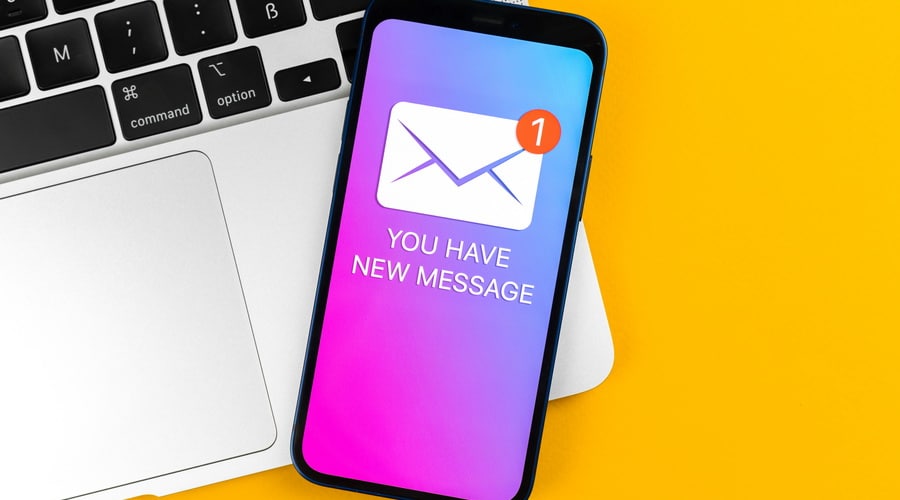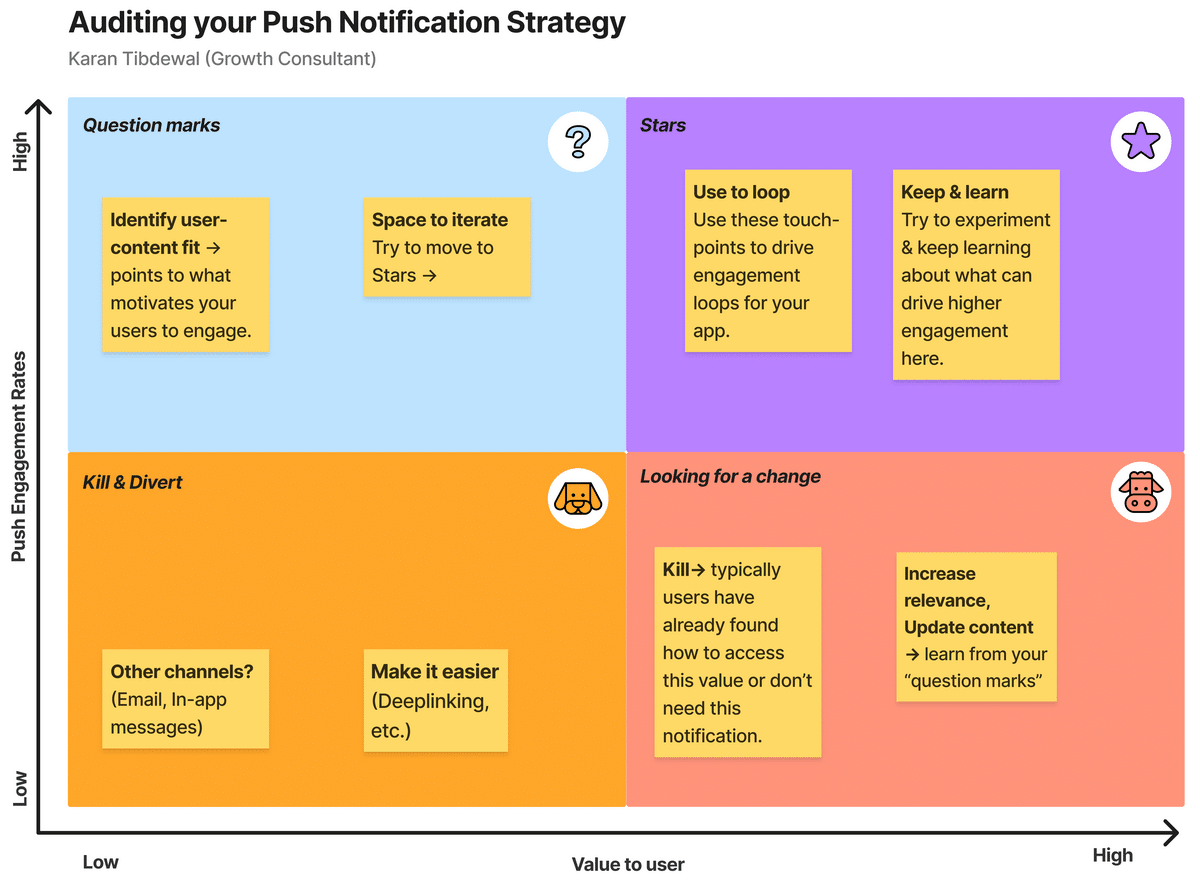Push Notification Mastery: Auditing Your CRM Strategy for Optimal Impact

How well are your push notifications performing? Is it engaging enough? Does it lead to better business outcomes for you? Let’s find a way to audit & understand your push notification strategy.
If you are working in or with CRM, growth, or retention teams – these questions should ideally have very clear answers. But as it often happens, most teams would have a hard time answering it.
Why is it difficult to answer these types of questions?
Most often CRM teams have initiatives across multiple channels (emails, in-app messaging, SMS, Direct Mail, Whatsapp, etc.). This makes it difficult to audit a single channel & understand whether we are doing a good job, or could we be doing better.
For instance, current industry benchmarks state that average open rates for push notifications are 4.8% for iOS and 3.9% for Android. So a lot of CRM analysis & internal reports compare their performance against this benchmark & leave their optimizations’ there.
The benchmarks also differ for app verticals, here’s a handy list you could use to compare:
| Industry | iOS
(Total Open rate) |
Android
(Total Open rate) |
Web Push
(Total Open rate) |
Email
(Unique Open Rate) |
| Entertainment | 3.45% | 3.89% | 0.17% | 41.21% |
| Finance | 8.98% | 7.12% | 0.51% | 41.89% |
| Gaming | 4.65% | 3.33% | 0.32% | 42.88% |
| Health & Fitness | 4.52% | 3.79% | 0.93% | 44.78% |
| Healthcare & Insurance | 4.79% | 2.90% | 0.62 8% | 43.78% |
| Marketplaces | 9.03% | 6.41% | 0.68% | 37.84% |
| Media & Publishing | 2.06% | 2.50% | 0.01% | 43.11% |
| On-demand | 4.47% | 4.03% | 0.27% | 41.20% |
| Retail & eCommerce | 4.47% | 3.00% | 0.19% | 39.62% |
| Social & Messaging | 7.59% | 9.02% | 0.15% | 34.93% |
| Technology | 2.37% | 6.22% | 2.39% | 37.09% |
| Transportation | 4.64% | 5.35% | 0.10% | 35.09% |
| Travel & Hospitality | 5.12% | 1.91% | 1.35% | 40.08% |
| Overall | 4.81% | 3.94% | 0.32% | 40.65% |
Source: Braze Benchmarks, June 2023
But this also doesn’t give you the complete picture – these benchmarks help you dig a bit deeper but don’t help you understand the differences between transactional & marketing push notifications, the volumes of sends per week, etc.
So the question remains, how can you or your CRM team dig a bit deeper into your auditing your push notifications performance?
Framework to audit your push notification strategy & find optimizations
Here’s a template for a quick health check-up of your current setup – it could be a time-effective way of conducting such an audit.
This is the Auditing Matrix that I’ve used many times to do this exercise with CRM teams and still use as a mental model.
Simply plotting the touchpoints on this matrix can help you achieve three key targets:
1. Reduce the volume of your notifications
Bombarding users with excessive notifications can lead to irritation and fatigue, causing them to opt-out or uninstall your app. Identify touchpoints that contribute to low value or engagement and consider eliminating or consolidating them. Additionally, leverage user preferences and behavior data to implement frequency capping and allow users to customize their notification settings, ensuring a more personalized and non-intrusive experience.
2. Increase user engagement and generate learning
To audit your push notification strategy effectively, start by plotting your touchpoints on a matrix that measures the value of each touchpoint against the average engagement generated by the corresponding notification. This matrix allows you to identify touchpoints that deliver high value with minimal engagement or vice versa. By analyzing this matrix, you can prioritize and optimize your touchpoints accordingly.
3. Most importantly, it can help increase the value that your notifications deliver to your users
Leverage user data, such as browsing history, past interactions, and preferences, to tailor notifications to individual users. Experiment with A/B testing to identify the most effective messaging, timing, and content. Additionally, explore interactive push notifications that enable users to take actions directly from the notification itself, promoting seamless engagement.
If you’re serious about using Push as a lever for growth & engagement, then it’s time to start focusing on the right things. And creating such a matrix for your efforts could definitely help identify focus points.
Conclusion
Push notifications are easy at first glance. Users who are opted in to push notifications typically tend to be engaged much higher, buy more and in general are more valuable users for your app. Treating them well & always trying to do better with your engagement strategy is the key to maintaining this relationship.













